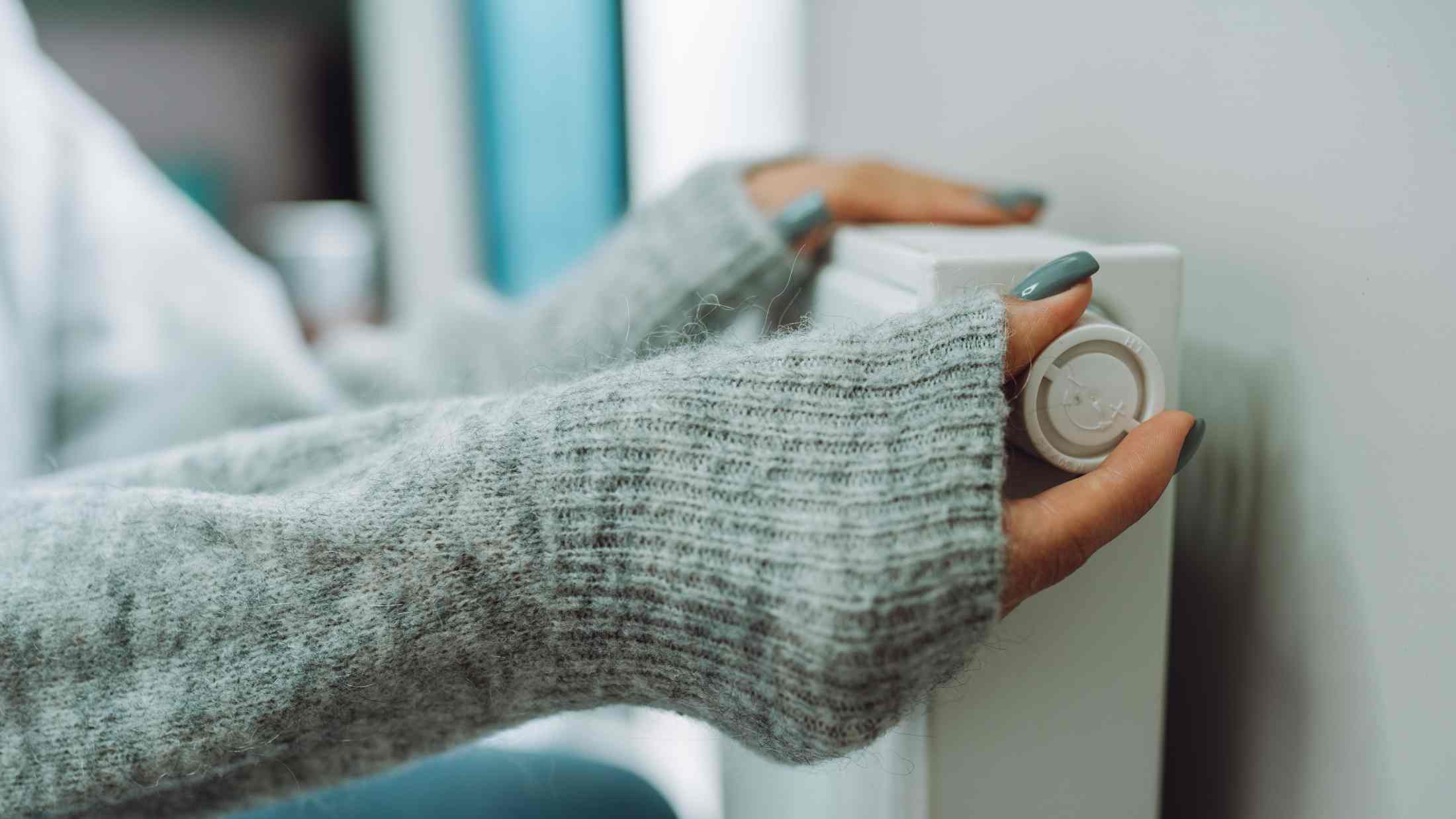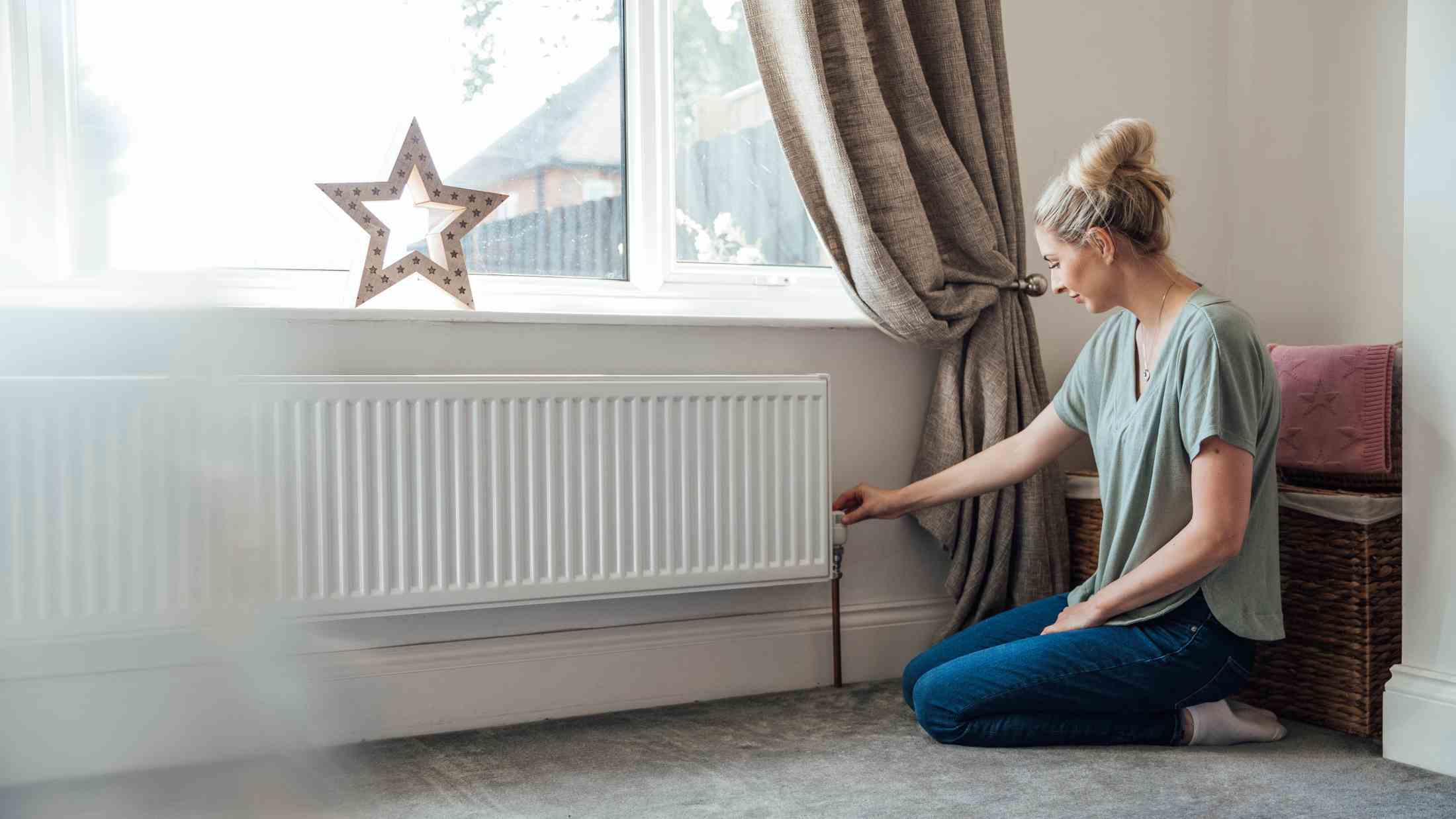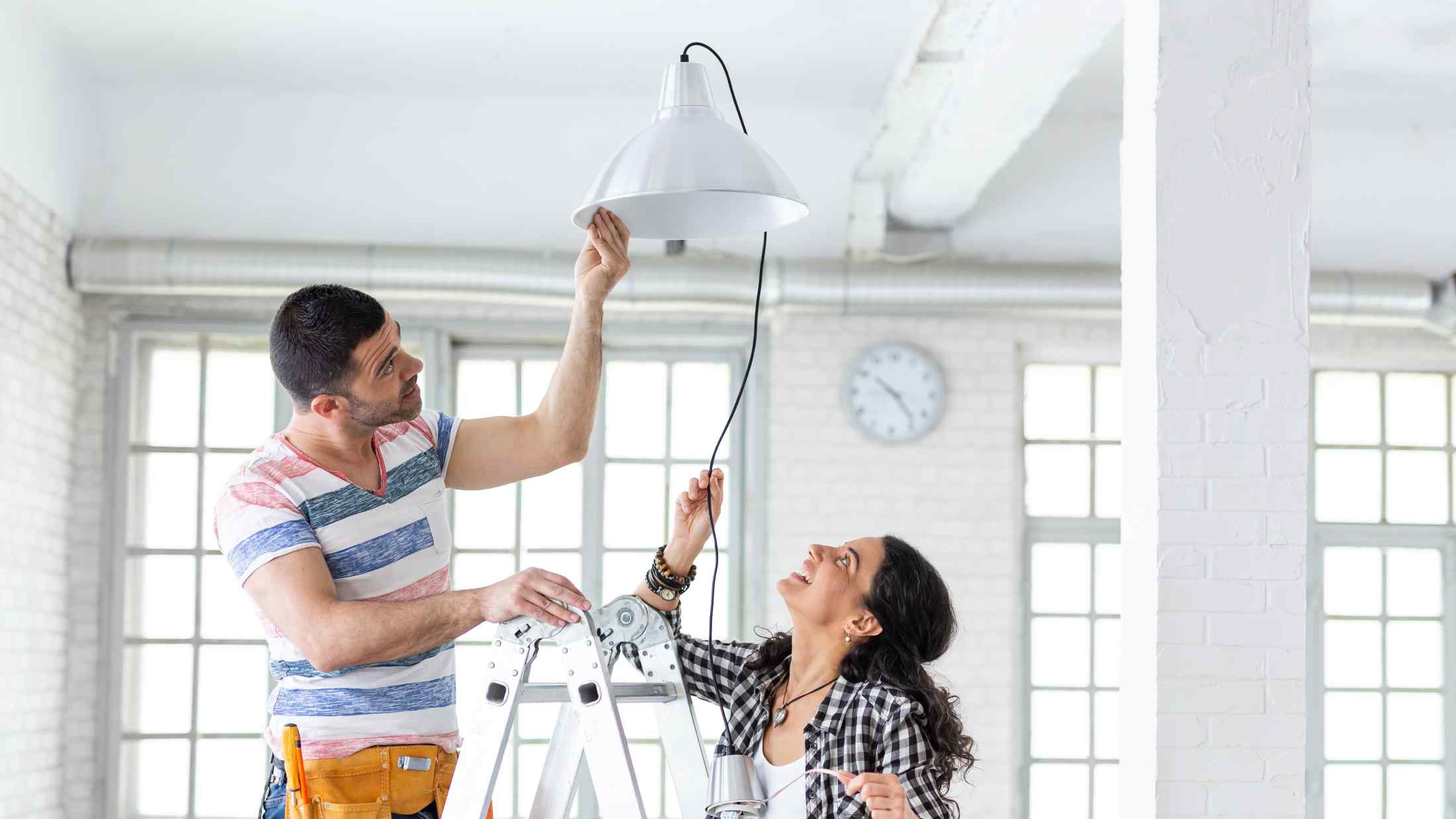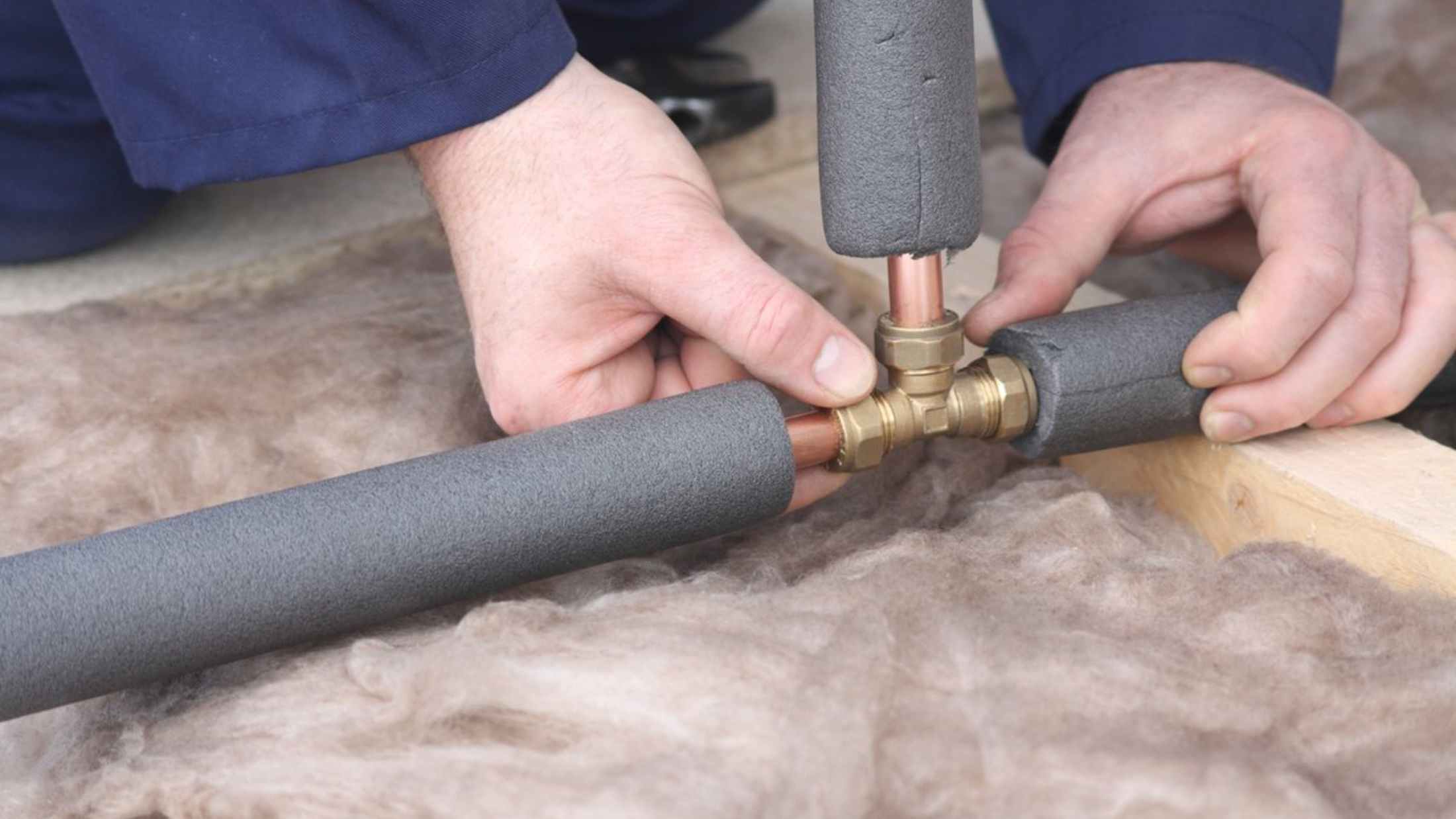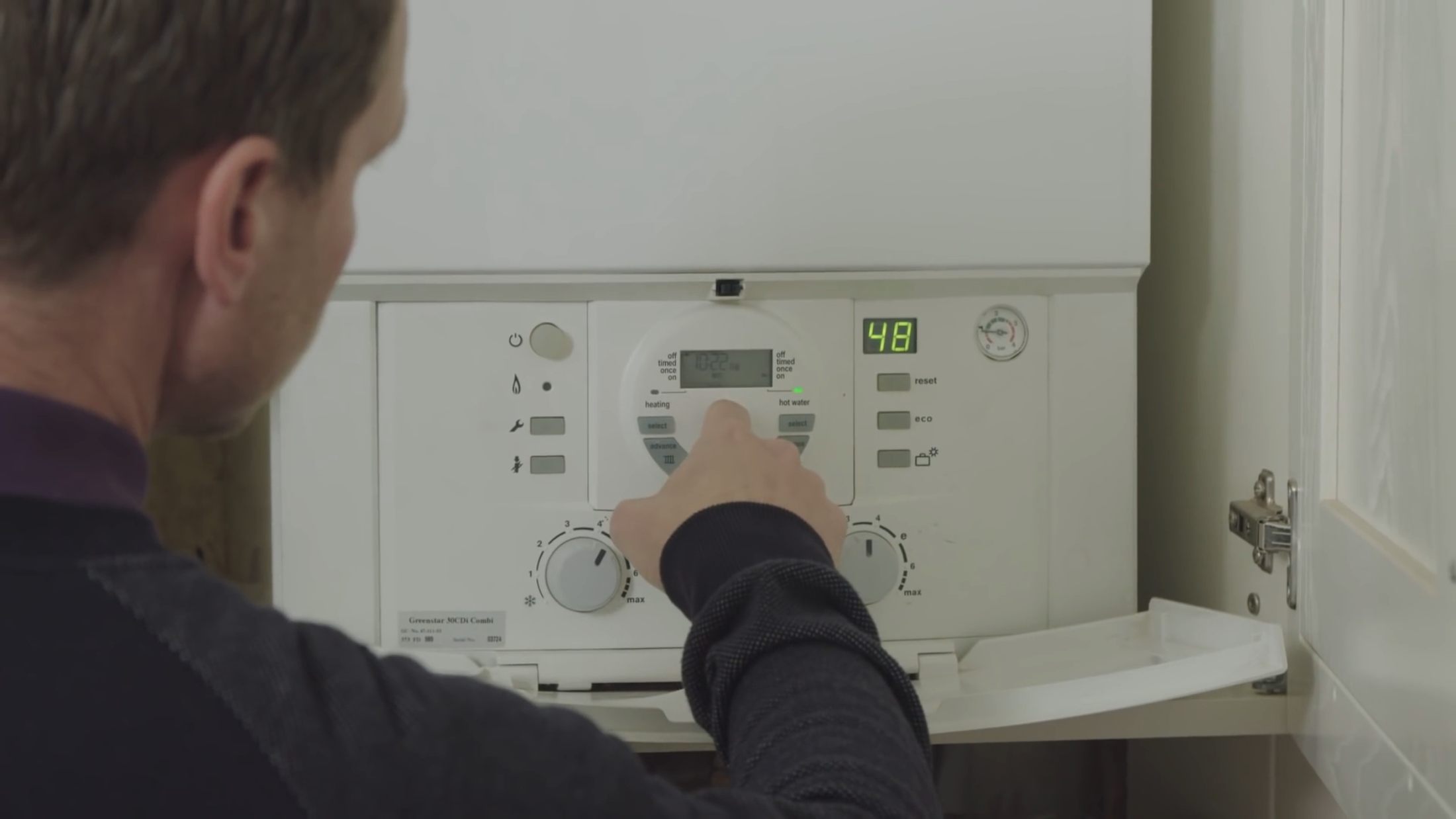In 2008, the UK set an ambitious target of cutting greenhouse gas emissions by 80% by 2050, although recent reports suggest that not enough progress has been made to hit these targets so far.
And with new Ultra Low Emissions Zones in London due to expand further, moves to tackle single-use plastic and new MOT rules designed to target high-emissions vehicles, it seems that eco-friendly initiatives are very much on the agenda for some time to come in the UK.
But what do these big initiatives actually mean for UK households day to day? Are we living the eco-friendly Good Life, or is there still more we could be doing to go green at home?
AXA surveyed 3000 UK adults1, looking at factors such as age, location, employment status and living situation, to find out exactly how eco-friendly UK households really are, and what more we can all be doing to help hit climate targets.
Does younger really mean greener?
We wanted to find out who the UK's green champions really are, and despite millennials' reputation for being eco-conscious, our research revealed it's the older generation that are the most eco-savvy.
In fact, 18-24 year olds are two thirds more likely to ignore advice on how to make homes eco-friendly compared to those over 55 and are 15% less likely to worry about how much power they are using at home compared to those over 55. Only 32% of 18-24 year olds are aware of the recycling rules in their area compared to 68% of over 55s.
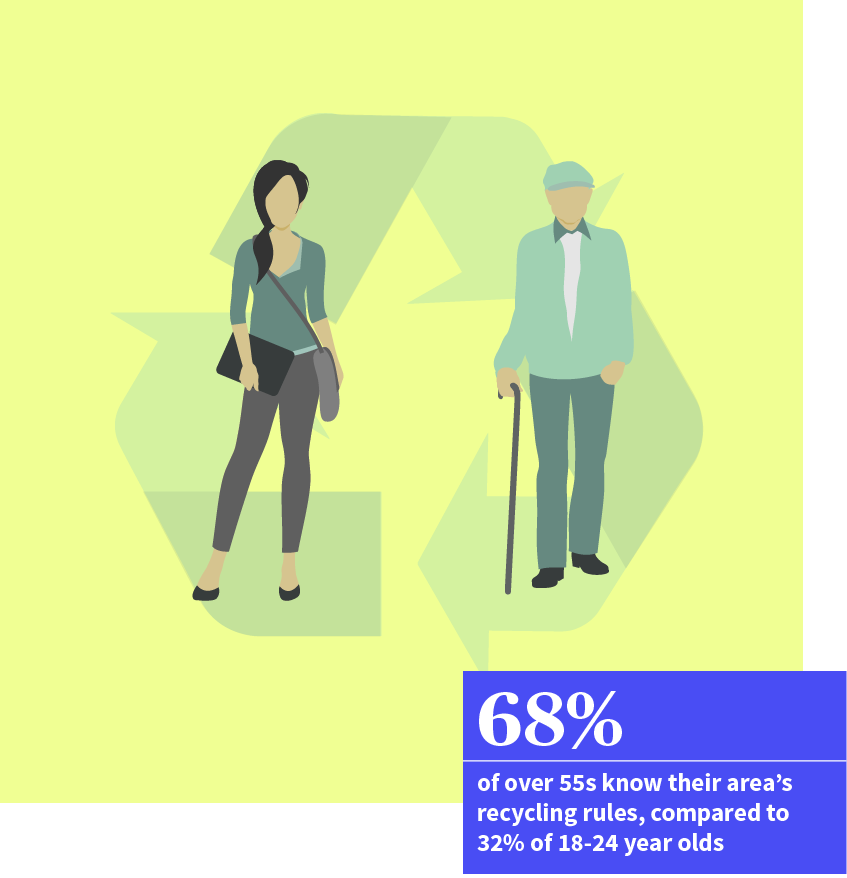
So what can the younger generations do to catch up to their eco-friendly elders?
To find out, we asked interior designers Nicola Keenan and Nicola Lindsell of Boxx Design for their trendy eco-inspired tips:
“Turning trash into treasure and landfill into lifestyle is very popular. The up-cycling of old and unused furniture items - mending and redecorating to create unique pieces or to give furniture and other homeware a new lease of life - works well for the vintage and shabby chic inspired.
“For a more industrial feel, furniture made from reclaimed flooring, scaffolding planks, crates, railway sleepers and repurposed metal pipework is also popular trend.”
How eco-friendly is your neighbourhood?
With places like London introducing Ultra Low Emissions Zones, and plans for these to be expanded into 2021, it’s clear that where you live can also play a part in how eco-friendly you are.
For example, our survey showed residents in Birmingham (84%), Newcastle (82%) and Norwich (82%) are the most likely to wash their clothes at 30 degrees, while those in Portsmouth (72%), Liverpool (71%) and Brighton & Hove (68%) are the least likely.
Residents of Chelmsford and Cardiff are particularly eco-friendly, with Chelmsford residents the most likely to turn the heating down (96%), hang-dry clothes (95%) and turn off the lights when they leave a room (95%). Meanwhile, those living in Cardiff are most likely to use their food waste bins (84%), walk short journeys instead of using their cars (85%) and avoid using non-recyclable materials (79%).
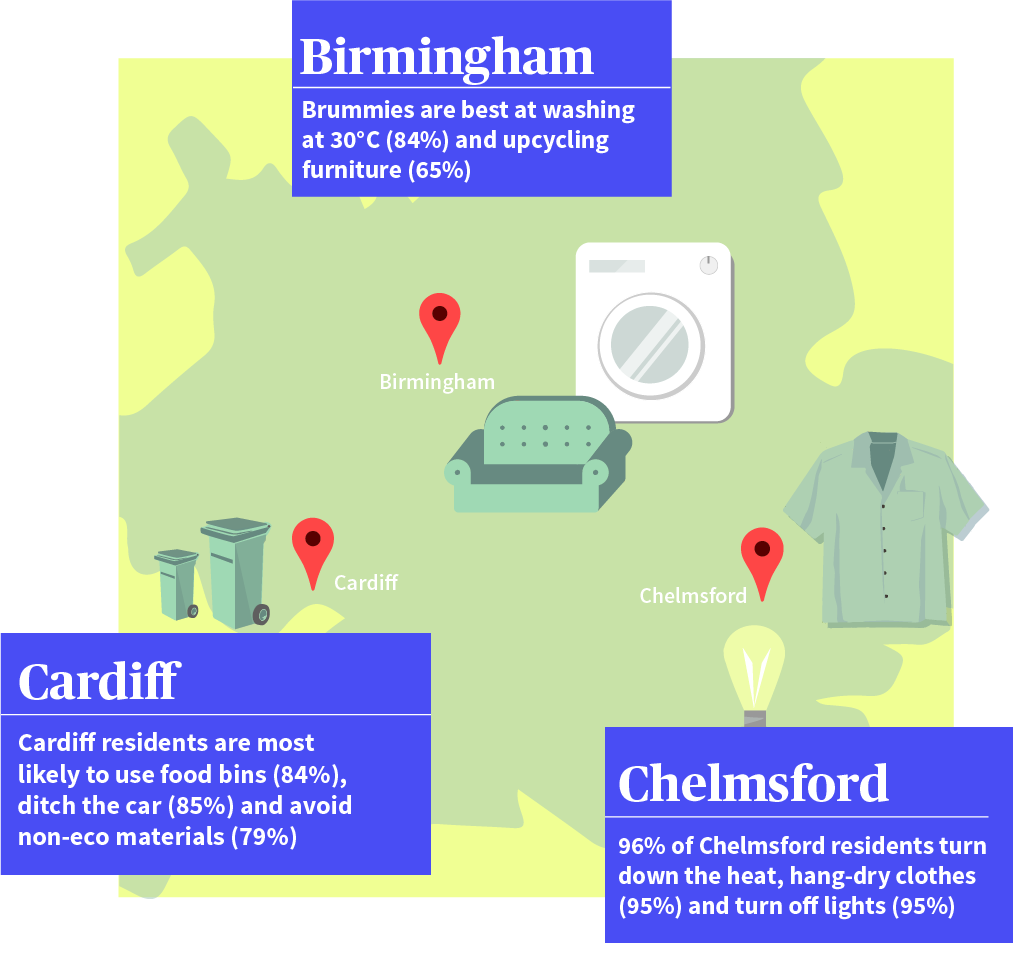
So if location, location, location plays a part in how eco-friendly we are, how can we use our location to our advantage when going green?
According to our Boxx designers:
“Buy British. If you want to make your home stand out, incorporate artisanal furniture and goods into your room scheme. By buying British, you help support the great work of talented, ethical and sustainable British designers and makers.
“Research the origins of your products. Whether it's asking what products are made from or where they come from, never be afraid to ask questions. Not all retailers display this origin information readily but the more demand there is, the more likely they're likely to begin doing so.”
Are entrepreneurs more eco?
People who are self-employed can be more flexible when it comes to where they work, which could be why our research shows the self-employed tend to ensure their homes are as eco-friendly as possible.
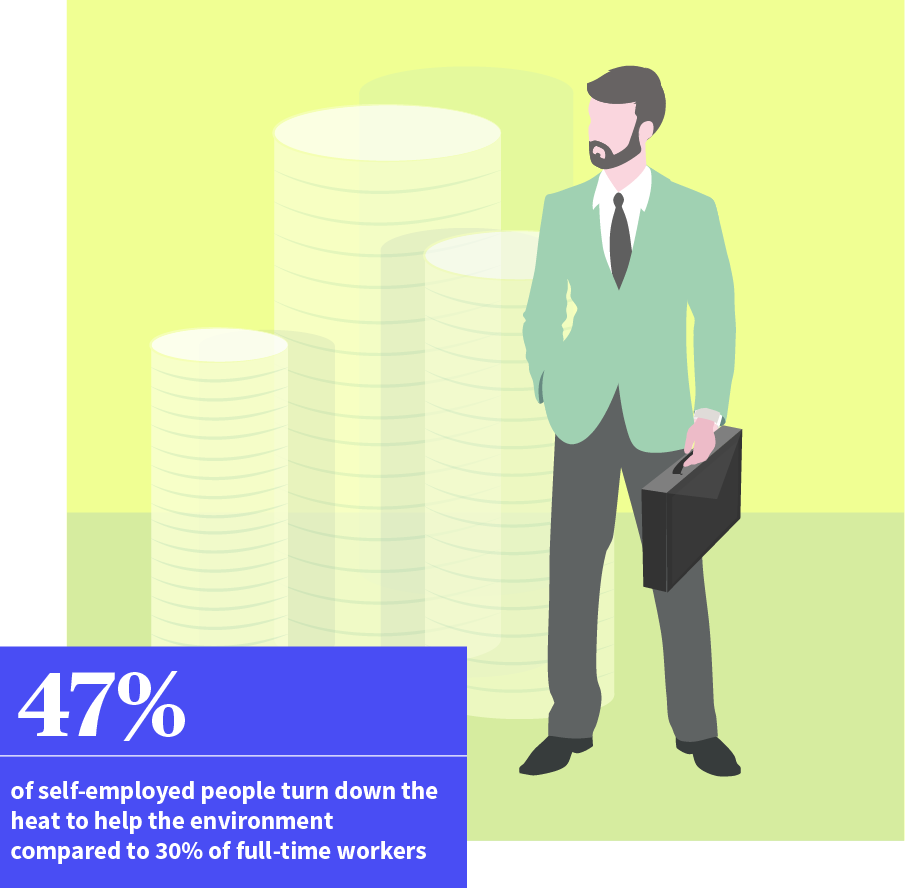
47% of self-employed people make sure they turn the heating down when it's not needed, compared to just 30% of people who work full time. The self-employed are also a third more likely to use public transport or car share than their full-time counterparts. 42% said that they walk instead of use a car if it's a short distance, compared to just 29% of those who work full time and 31% of people who work part time (8 - 29 hours per week).
According to Boxx, eco-friendly homes can enhance your wellbeing - great for entrepreneurs whose work and home are one and the same:
“Incorporate nature into your home by introducing plants and organic natural fabrics such as cotton, linen, wool and other plant fibres. By surrounding yourself with natural materials and textures, you establish a closer connection to the natural environment, which can help enhance the feeling of calm and wellbeing in your rooms.”
Is bigger greener?
The population of the planet is growing, and so too is the average size of our households. Currently, 19% said that our homes are already fairly crowded, with more people living in them from more generations of the family. However, 38% of our survey respondents believe that this will only worsen in the next 20 years.
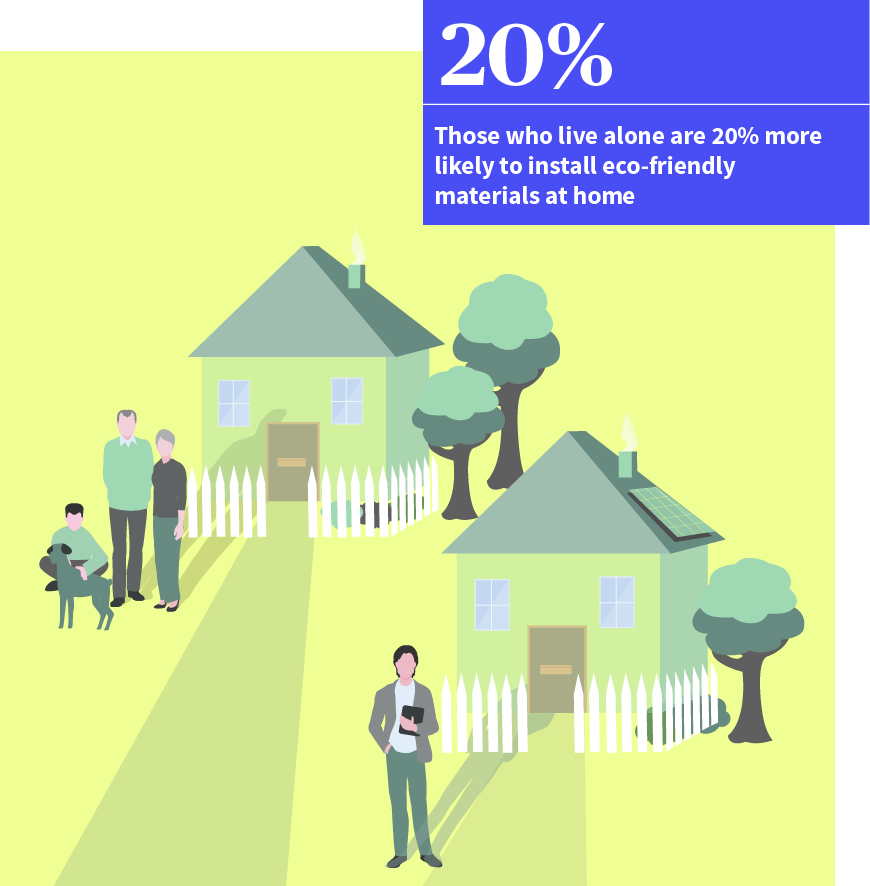
Our research also saw the size of your household affecting how eco-friendly you are. For example, those living with four people are almost twice as likely to be confused by advice on how to be more eco-friendly than those that live alone.
Homes with four people living in them are also a quarter more likely to say they find waste disposal rules - for example how to dispose of recycling, food waste - confusing, compared to those living alone. Those living alone are also 20% more likely to install eco-friendly materials in their homes if they were made more affordable compared to those living with four people.
On the topic of eco-friendly materials to choose in the home, our Boxx designers said:
“Let there be (energy efficient) light! Energy efficient lighting such as LEDs can typically use about 25-80% less energy than traditional incandescents - and ultimately save you money in the long-run.”
1 Based on AXA survey of 3000 UK adults conducted between February and March 2018.

